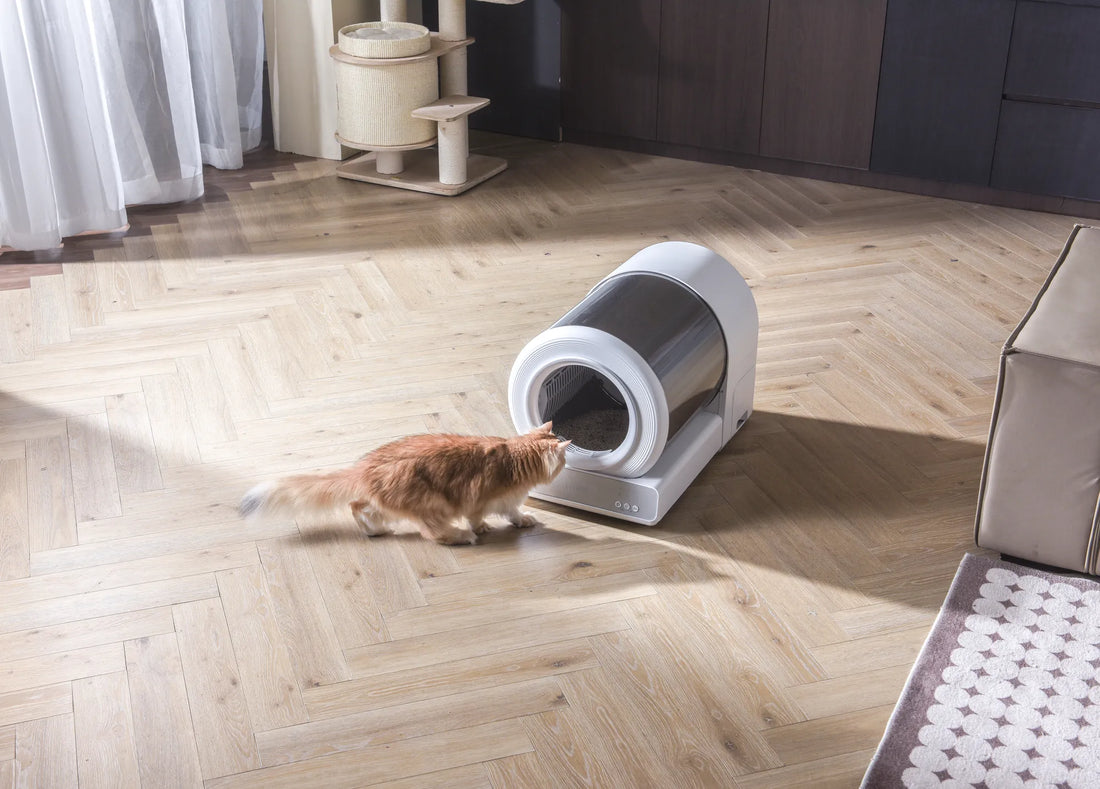When your cat starts vomiting and peeing outside the litter box, it can be both concerning and frustrating. These behaviors are often signs that something is amiss, whether it's a health issue, stress, or an environmental factor. Understanding the root causes and implementing the right solutions can help restore harmony in your home and ensure your cat's well-being.
Common Causes of Cat Vomiting
Vomiting in cats can stem from a variety of causes, ranging from minor to severe. One of the most common reasons is dietary indiscretion. Cats are curious creatures and may ingest something that doesn't agree with their stomach, such as spoiled food, plants, or foreign objects. Hairballs are another frequent culprit, especially in long-haired breeds. When cats groom themselves, they swallow hair, which can accumulate in their stomach and lead to vomiting.
More serious causes of vomiting include gastrointestinal issues like gastritis, pancreatitis, or inflammatory bowel disease. Infections, parasites, and toxins can also trigger vomiting. In some cases, vomiting may be a symptom of systemic conditions such as kidney disease, liver disease, or diabetes. If your cat's vomiting is persistent or accompanied by other symptoms like lethargy, weight loss, or changes in appetite, it's crucial to seek veterinary attention.
Why Cats Pee Outside the Litter Box
Peeing outside the litter box is another behavior that can indicate underlying problems. One of the primary reasons is a medical issue, such as a urinary tract infection (UTI), bladder stones, or feline lower urinary tract disease (FLUTD). These conditions can cause pain or discomfort, leading your cat to associate the litter box with discomfort and avoid it.
Stress and anxiety are also common triggers. Changes in the household, such as a new pet, a move, or even a change in routine, can make your cat feel insecure. Cats are creatures of habit, and any disruption can lead to behavioral issues, including peeing outside the litter box. Additionally, territorial marking, especially in unneutered males, can result in inappropriate urination.
Environmental Factors to Consider
The litter box itself can be a source of the problem. Cats are particular about their litter box preferences, and if it's not clean, too small, or in an inconvenient location, they may choose to go elsewhere. The type of litter used can also make a difference; some cats prefer clumping litter, while others may favor non-clumping or scented varieties. Experimenting with different types of litter and ensuring the box is cleaned regularly can help address this issue.
Another environmental factor to consider is the number of litter boxes in your home. The general rule of thumb is to have one more litter box than the number of cats. This ensures that each cat has access to a clean box and reduces the likelihood of territorial disputes. Additionally, placing litter boxes in quiet, low-traffic areas can make your cat feel more secure and encourage proper use.
Addressing Stress and Anxiety
If stress or anxiety is the root cause of your cat's behavior, it's essential to identify and address the source of the stress. Providing a safe, comfortable space for your cat to retreat to can help alleviate anxiety. This could be a cozy bed, a cat tree, or even a quiet room where your cat can relax undisturbed.
Interactive toys, scratching posts, and regular playtime can also help reduce stress by providing mental and physical stimulation. Pheromone diffusers, which release calming scents that mimic a cat's natural pheromones, can be effective in reducing anxiety and promoting a sense of security. In some cases, consulting with a veterinarian or a feline behaviorist may be necessary to develop a comprehensive plan to address your cat's stress.
When to Seek Veterinary Help
While some cases of vomiting and peeing outside the litter box can be resolved with environmental changes or stress management, others may require veterinary intervention. If your cat's symptoms persist, worsen, or are accompanied by other concerning signs, it's essential to seek professional help. Your veterinarian can perform a thorough examination, run diagnostic tests, and recommend appropriate treatment options.
Early intervention is key to addressing underlying health issues and preventing complications. Your vet may recommend dietary changes, medications, or other treatments depending on the diagnosis. In cases of behavioral issues, your vet may also provide guidance on modifying your cat's environment or suggest behavioral therapy.
Preventive Measures for a Healthy Cat
Preventing vomiting and inappropriate urination starts with maintaining your cat's overall health and well-being. Regular veterinary check-ups, a balanced diet, and proper hydration are essential components of a healthy lifestyle. Ensuring your cat has access to clean, fresh water and a high-quality diet can help prevent many health issues that lead to vomiting and urinary problems.
Maintaining a clean and stress-free environment is also crucial. Regularly cleaning the litter box, providing multiple litter boxes, and minimizing changes in the household can help prevent behavioral issues. Additionally, keeping your cat's living space free of potential toxins, such as certain plants, chemicals, and small objects that could be ingested, can reduce the risk of vomiting.
By understanding the potential causes of cat vomiting and peeing outside the litter box, you can take proactive steps to address these issues and ensure your feline friend remains happy and healthy. With the right care and attention, you can create a harmonious environment where your cat thrives.
If your cat is exhibiting these behaviors, don't wait to take action. Addressing the issue promptly can make a significant difference in your cat's quality of life and your peace of mind. Start by observing your cat's habits, making necessary environmental changes, and consulting with your veterinarian if needed. Your furry companion deserves the best care, and with the right approach, you can help them overcome these challenges and enjoy a happy, healthy life.













